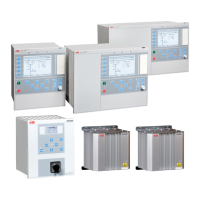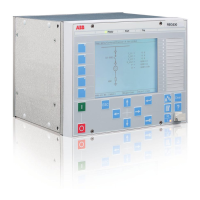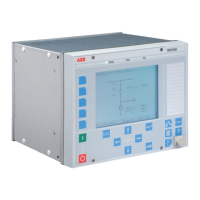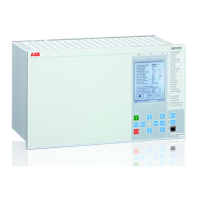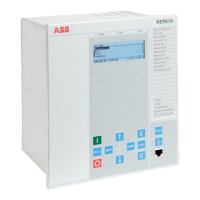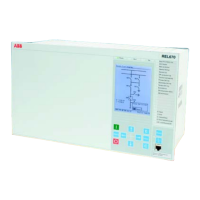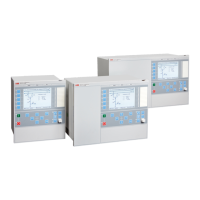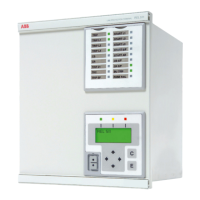The distance protection function is designed to meet basic requirements for application on
transmission and sub transmission lines (solid grounded systems) although it also can be
used on distribution levels.
8.1.2.2 System grounding
The type of system grounding plays an important roll when designing the protection
system. In the following sections, some hints with respect to distance protection are
highlighted.
Solid grounded networks
In solid grounded systems the transformer neutrals are connected solidly to ground
without any impedance between the transformer neutral and ground.
ANSI05000215 V2 EN
Figure 57: Solidly grounded network
The ground fault current is as high or even higher than the short-circuit current. The series
impedances determine the magnitude of the fault current. The shunt admittance has very
limited influence on the ground fault current. The shunt admittance may, however, have
some marginal influence on the ground fault current in networks with long transmission
lines.
The ground fault current at single phase -to-ground in phase A can be calculated as
equation
24:
A A
0
1 2 0 f 1 N f
3 V
3I
Z Z Z 3Z Z Z Z
V×
= =
+ + + + +
EQUATION1710 V2 EN
(Equation 24)
Where:
VA is the phase-to-ground voltage (kV) in the faulty phase before fault
Z1 is the positive sequence impedance (Ω/phase)
Z2 is the negative sequence impedance (Ω/phase)
Table continues on next page
Section 8 1MRK 506 369-UUS -
Impedance protection
158 Line distance protection REL670 2.2 ANSI
Application manual

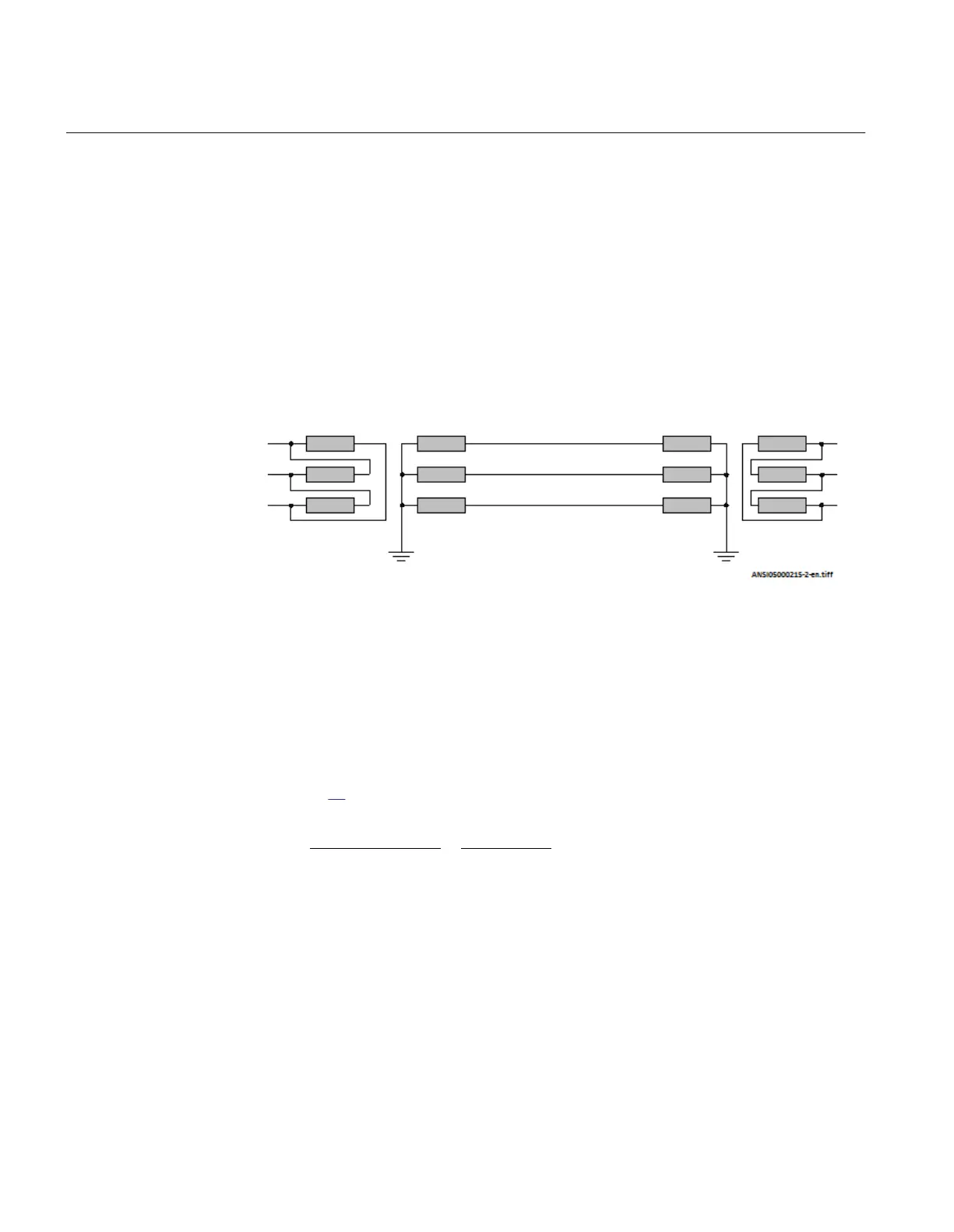